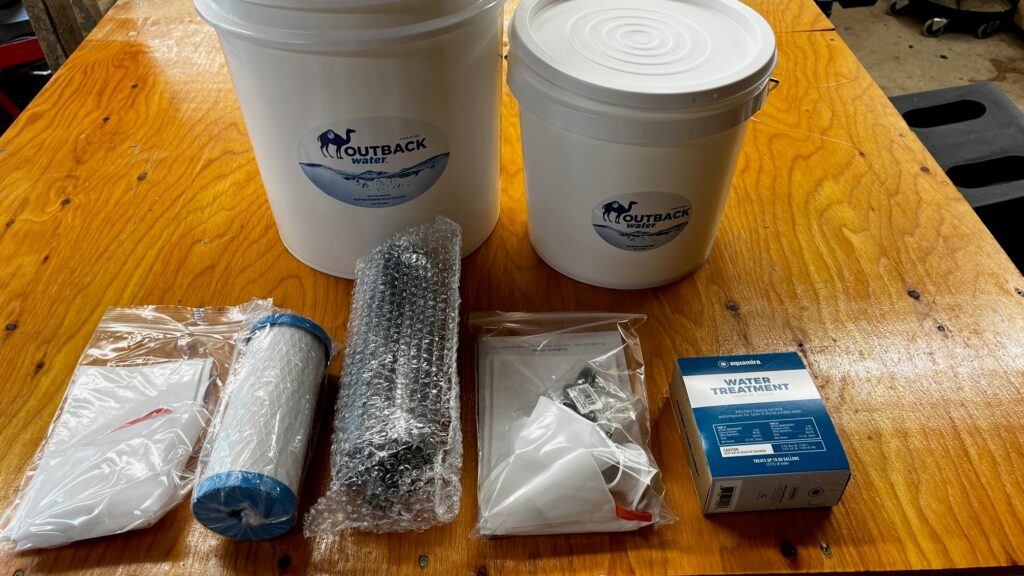
The water source at our house is from a well. It had some of the best tasting water we have experienced until we discovered the high mineral content that was contributing to the great tastes was also causing havoc on our fixtures. Cue the water softener, which solved our fixture issues, but also changed the taste of the water. A first-world problem obviously, but still disappointing.
While we were working through this minor issue, we also had to contend with the surprisingly unreliable electrical grid that we were now part of. During our first 6 months, the power went out at least 4 times for a protracted period. This does not include the many times where it flickered enough to reset the clocks on various appliances. Eventually, we figured out that since we’re on a well, a power outage will not only cause a heat issue but also leave us without a water supply.
We quickly took care of our ridiculously unreliable power supply with a Generac Generator, but still wondered about an emergency water supply in the event the pump fails. Luckily, as we pondered this latest issue, we glanced thoughtfully out the window which reminded us that we live on a river, so we have all the water we could possibly want. We just need to ensure that it’s safe to drink. This is where the Outback-Plus Water Filtration System comes in. Note that even though this is a house-related issue, anyone that is sailing in freshwater like the Great Lakes may want to consider this system as an alternative means to get drinkable water on board.
What we like about the setup as a filtration system was that is simply a gravity feed process. No electricity, no mechanical manipulation, just add water and wait.

This is what it looks like when you unpack the box. We bought ours through ESP Water Products, but you can also order them direct from Outback or through Amazon. Even though Amazon may get it to you quicker, they seem to be the same price regardless of the retailer.

This is what it looks like after you unpack everything. A 5-gallon bucket, a 2-gallon bucket, a paper filter, charcoal filter, membranes, a spigot and some post-filter water treatment drops.

This is how everything goes together…

…and you end up with this. For reference, it is approximately 24″ high and 12″ in diameter when it is assembled so it will take up some space if you’re using it on a boat.

Note the colour of the river water during our first try. There are likely some worse places to use as a water source, but visually at least our river should prove to be a good candidate to test.
Unfortunately, due to the hot housing market here, (we think) the water tests are taking a little while to process. So far, we only go back the microbiological results, not the inorganics which could take another week.
Here are the results of the unfiltered water sample
> 200.5 – Total Coliforms (FFA10) MPN/100mL
4.2 – E. coli (FFA10) MPN/100mL
For context in the local jurisdiction here, when you do a water test to buy a house and the MPN/100mL is only 1, that is a failed test.
Here are the results of the filtered water sample
0 – Total Coliforms (FFA10) MPN/100mL
0 – E. coli (FFA10) MPN/100mL
So… For the microbiological test, the filter system took an absurdly high Coliform, and very high E.Coli count and reduced them to zero, and that was without using the post-filter water treatment drops.
So far, so good.
Once the inorganic test comes back we’ll post the results.

Leave a Comment